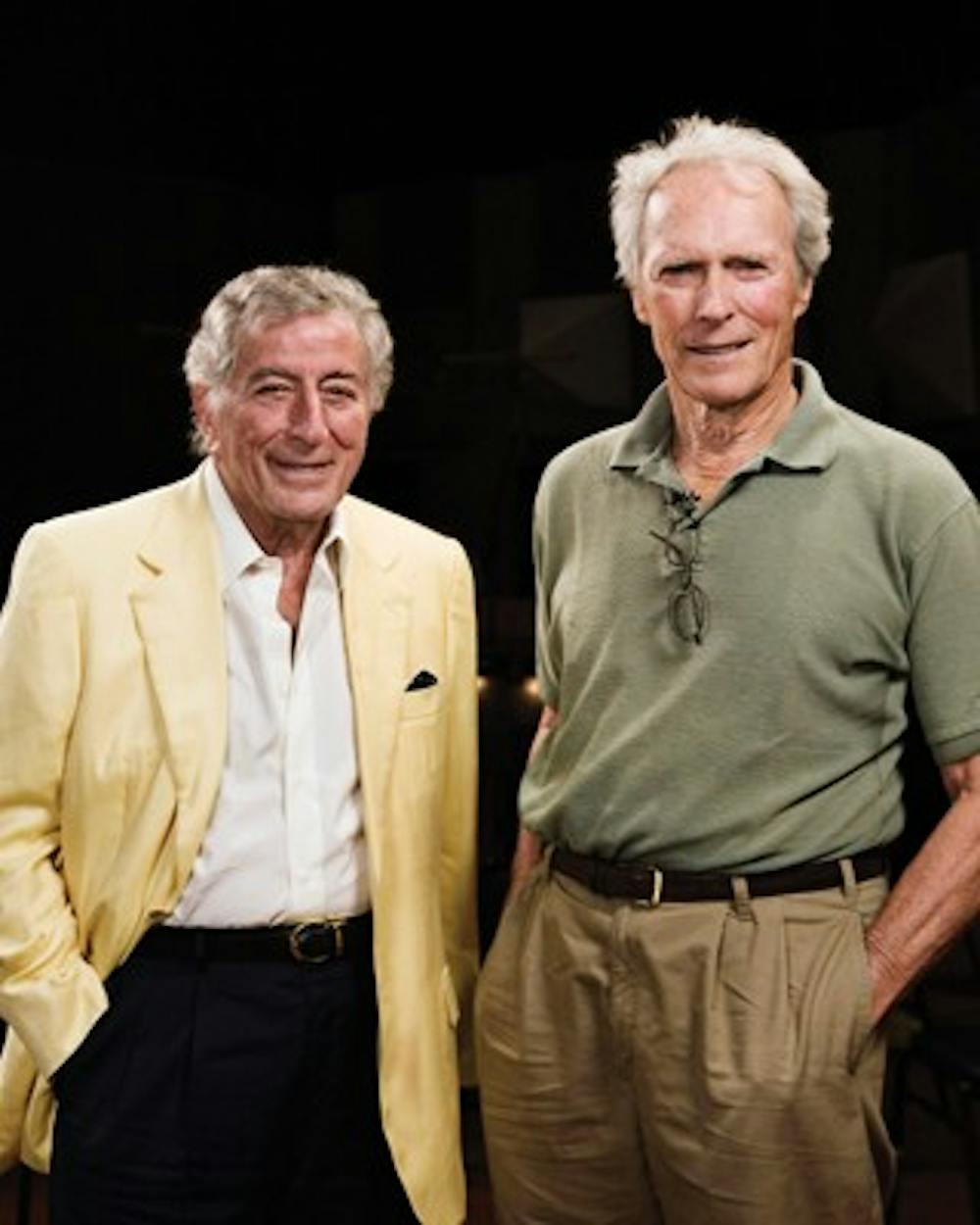LOS ANGELES – The two men are perched at a piano, one tapping out an impromptu version of the classic tune “In a Mellow Tone,” the other nodding encouragement.\nWhat makes the scene noteworthy is that the piano man is Clint Eastwood and his cheering section is Tony Bennett. They’ve met at a studio for a bit of music and conversation being filmed for Eastwood’s documentary portrait of the great pop singer.\n“Tony Bennett: The Music Never Ends,” debuting Wednesday, Sept. 12, on PBS stations, pairs two artists who have demonstrated both longevity and the creative strength to remain unaffected by fashion.\n“He’s the last of the storytelling singers. They phrase things just the way they’re telling a story ... instead of a lot of gymnastics,” Eastwood told The Associated Press.\nHe recalled seeing Bennett at the 2005 Monterey Jazz Festival and filming him in anticipation of making the biography that’s airing as part of PBS’ “American Masters” series.\n“Good thing we did, too,” Eastwood said of capturing Bennett’s set, which is laced throughout the film. “He’s had so many wonderful performances but that performance was really good. People were just spellbound.”\nAnd, as “The Music Never Ends” shows, Bennett reveled in the audience’s response.\n“I’d love to sing for another 60 years. Beautiful!” he announced with the familiar wide grin that rarely leaves him onstage.\nBennett, 81, whose signature song is “I Left My Heart in San Francisco,” has retained the power and pitch to deliver a song the way it should be done, said Eastwood, 77.\nThe singer returns the compliment, calling Eastwood’s Oscar-winning work as a director “magnificent” and a demonstration of what can be learned from experience.\n“You know what to leave out; you simplify to communicate more,” Bennett told the AP.\nEastwood’s film is a reminder of how beautifully Bennett does that. But the simplicity is deceptive: His approach mixes jazz with pop and has deep roots in the Italian musical tradition of bel canto (“beautiful music”), which emphasizes a light, flowing technique.\nThe documentary also places Bennett within the American cultural context, tallying both his influences (Fred Astaire, Judy Garland among them) and how he ranks as a performer – and a painter. To Bennett’s delight, his artwork gets its share of attention.\nAlec Baldwin, who played Bennett in a “Saturday Night Live” skit opposite the good-natured singer himself, offers a particularly sharp observation.\n“In theater and in live performance ... the audience has to believe that there’s no place else you’d rather be. And there is no one in this business who conveys that more effectively than Bennett,” Baldwin says in the film.\nAs for Bennett’s vocals, another admirer put it best.\n“For my money, Tony Bennett is the best singer in the business,” was Frank Sinatra’s assessment. “He excites me when I watch him, he moves me. He’s the singer who gets across what the composer has in mind and probably a little more. There’s a feeling in back of it.”\nEastwood, a jazz buff who’s composed for film, holds his subject in equally high regard.\n“If America is a song, Tony Bennett is its singer. Here is the singer and here is the song,” narrator Anthony Hopkins says in the film’s opening.\nThe documentary is “very much one artist’s musings about and appreciation for another, in the same way that our film on (Bob) Dylan, directed by Martin Scorsese, was,” said “American Masters” executive producer and series creator Susan Lacy.\nWorking with director-producer Bruce Ricker, Eastwood focused on the work and character of the former Anthony Dominick Benedetto, who was re-christened by early booster Bob Hope. “The Music Never Ends,” presented by Netflix’s Red Envelope Entertainment, has the smooth pacing of an unhurried, relished tune.\nThere’s a treasure trove of clips, including one illustrating Bennett’s reluctant 1950s cover of Hank Williams’ “Cold, Cold Heart.” When Bennett finally gives in to his record company and goes country, he does it his way.\nPerforming at the Grand Ole Opry, he’s seated next to a cowboy-hatted Ernest Tubbs. But Bennett is, as always, impeccably turned out in a suit, tie and French-cuffed shirt.\nIn interviews for the film, longtime friend Harry Belafonte cites his admiration of Bennett’s stalwart support for the civil rights movement. Writer Gay Talese marvels at the career that has spanned the mid-20th century to now, and with no end in sight.\n“Tony Bennett in the Studio: A Life of Art and Music,” by Bennett and a co-author, is out this month, as are two new albums, and Bennett proudly notes his paintings have been accepted at museums including the Smithsonian. He collected two Grammy Awards this year, including one for his best-selling album “Duets: an American Classic,” to increase his total to 15. He has an ambitious concert schedule.\nForget the alternative, he said.\n“As George Burns said, ‘Retire to what?’ You should do what you really like to do, love to do, and then just keep going forward. The more you keep learning, the more life becomes important, and it makes you live longer.”
Clint Eastwood tells Tony Bennett’s story in new PBS documentary premiering next week

Get stories like this in your inbox
Subscribe





